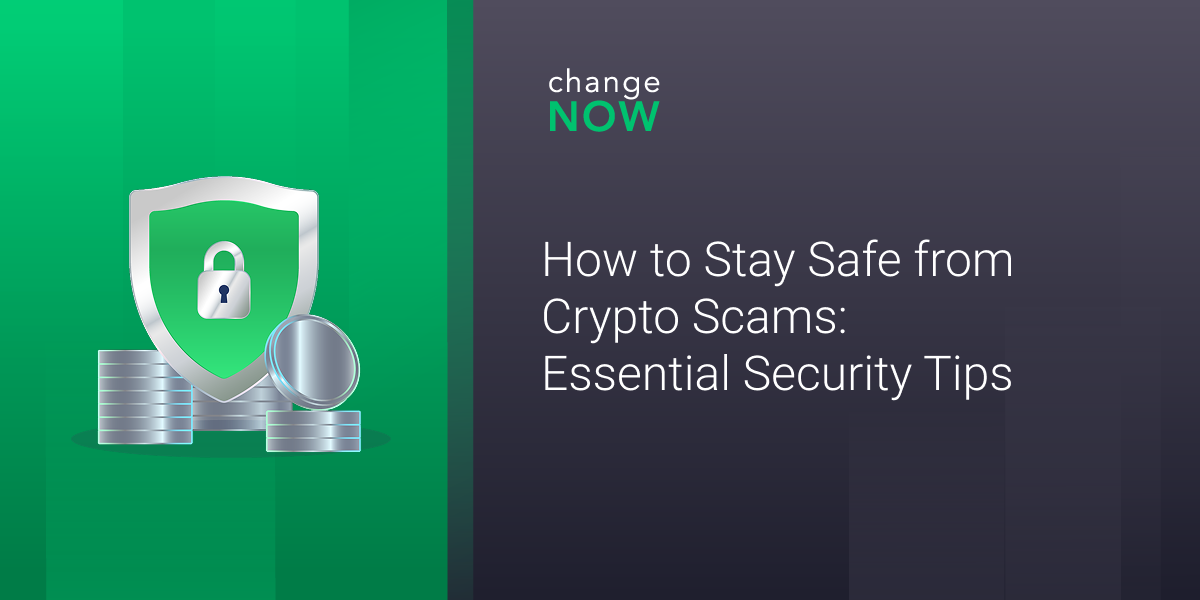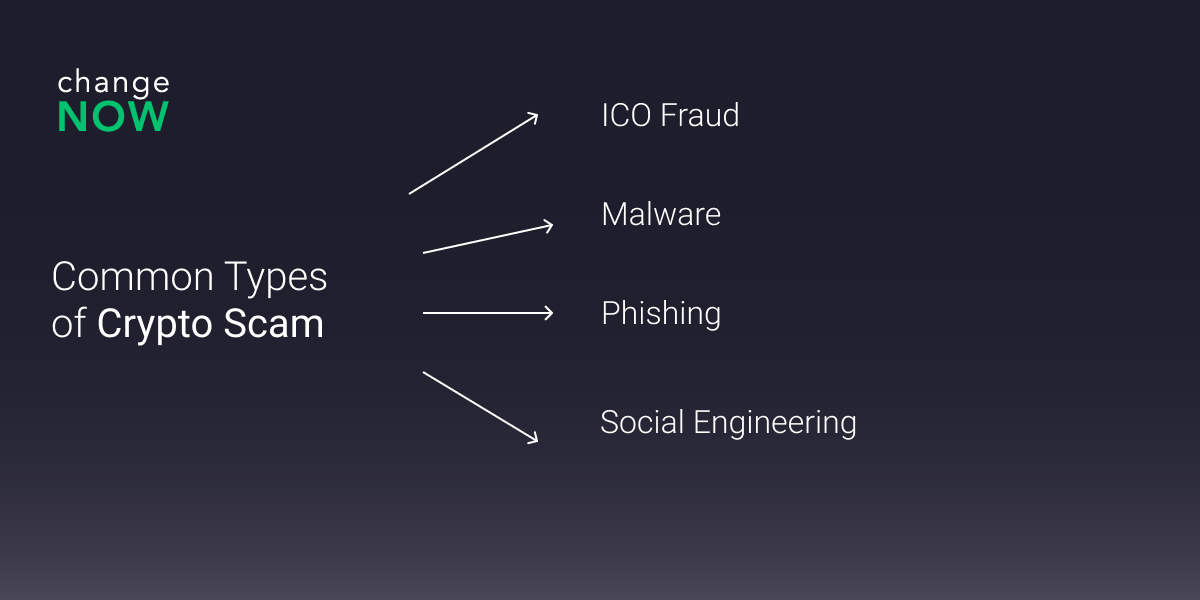How to Stay Safe from Crypto Scams: Essential Security Tips

Key Takeaways
- Crypto scams keep spreading because scammers are always a step ahead of people who are still figuring out how to protect themselves.
- Phishing, social engineering, and malware remain the most common threats — not because the technology is weak, but because people are easier to trick than blockchains are to break.
- The choice of wallet matters, however, what really protects your assets is how carefully you handle access, approvals, and recovery tools.
- Simple routines for keeping your assets secured like confirm links before clicking, safeguard your recovery phrase offline, spread funds across multiple wallets, and stay informed about new threats.
The Growing Problem of Crypto Crimes
Recent Chainalysis report shows that losses to crypto crime have already exceeded $2.17 billion in 2025, with a large share coming from schemes where users are tricked into giving access to their wallets. Kroll also estimates around $1.93 billion in damages just in the first half of the year. On top of that, phishing attacks aimed at crypto wallet users have surged by about 40% year-over-year. It is a clear sign that criminals increasingly focus on manipulating people rather than hacking blockchains directly.
Common Crypto Scam Types
In this article, we break down popular crypto scam methods that cause the most damage to users assets and give you clear tips on how to stay out of trouble.

ICOs: Illusion of opportunity
An Initial Coin Offering (ICO) is a way for new blockchain projects to raise funds by selling freshly minted tokens to early buyers. It seems to be a simple process - put your money in the beginning, see the project developing and eventually your tokens getting more expensive. But in actual fact, this sector of the crypto market became extremely risky and was infested with scammers. The truth is, this part of the crypto market turned out to be very risky and full of scams. According to Investopedia billions have been raised through ICOs, yet a huge portion either failed or turned out to be scams since 2017. Research of Institute of Risk Management (IRM) estimates nearly 80% of ICOs never delivered anything meaningful.
For example, the case with OneCoin, promoted as a “Bitcoin killer”, proved to be a worldwide Ponzi scheme that took away hundreds of millions from investors before its creators disappeared. Another case about Kik’s Kin token that raised $100 million in 2017, only for the U.S. SEC to classify it as an unregistered securities sale and hit the company with heavy fines.
Large-scale ICO frauds that defined crypto’s early years have mostly faded into the past. Today’s scammers have shifted tactics, focusing on more precise and sophisticated schemes like phishing, social engineering, and malware aimed at exploiting human behavior instead of breaking technology itself.
Phishing Scams
Crypto Phishing is a scam when someone tries to fool you into giving them access to your wallet. Instead of forcing their way in, they pretend to be a trusted service — a crypto exchange, a wallet app, or even customer support. They send a link or message that looks official and ask you to “log in,” “fix an issue,” or “verify your account.”
If you type in your wallet details or recovery phrase on their fake page, you’re basically handing them the keys to your funds, and they can move everything out before you even notice.
Example:
According to CoinMarketCap, In early August 2025, a crypto holder lost $908,551 in USDC after signing a malicious smart-contract approval more than a year earlier. The approval gave the attacker long-term access to the wallet, and once a sizable balance appeared, the funds were drained in one transaction.
For more details on identifying and recovering from such attacks, see our in-depth article.
Social Engineering Scams
Social engineering scams focus more on psychology than technology. In this case, scammers manipulate people’s emotions like curiosity, empathy, or loneliness to gain their confidence and access to funds.
These scams often take the form of fake investment offers, romance cons, or impostors posing as trading mentors. They build trust over time, making the victim believe they’re dealing with a trustworthy person or opportunity before introducing the “investment.”
Example:
According to the Reuters investigation, many social-engineering scams begin with something as simple as a friendly message on a social platform. The scammer builds trust gradually, sharing fake screenshots of profits and acting like a knowledgeable mentor. Eventually, the victim is convinced to move funds into a private “investment” app or a new token that supposedly guarantees high returns. When the money is sent, the scammer disappears and so does the investment.
To understand how social engineering scams work, what psychological tactics they use and how you can protect yourself or recover from such incidents, read our Crypto Recovery Guide.
Malware and Browser Extension Scams
Some scams install hidden malware or browser extensions that monitor clipboard data or intercept crypto transactions. Once installed, they silently replace your wallet address with the attacker’s whenever you try to send funds.
Example:
In mid-2025, security researchers uncovered a campaign known as GreedyBear that pushed 150+ malicious Firefox extensions impersonating popular wallets and crypto tools. These extensions initially looked legitimate (some even had positive reviews), then updated to include code that intercepted wallet data and replaced destination addresses netting attackers an estimated $1M+. Mozilla removed many of the extensions after disclosure.
To avoid situations like this, stick to wallet extensions that come directly from trusted sources, and take a quick look now and then at what’s installed. When it comes to your recovery phrase, keep it strictly offline. Don’t take pictures of it, don’t save it in cloud storage, and don’t leave it buried somewhere in your camera roll. Keep your devices updated and only install apps from places you actually trust, most malware gets in when people click on a download without thinking.
Scam Red Flags to Watch For
Pay attention to these common red flags and avoid most scam attempts right away:

Stay Safe Tips: How to Protect Yourself from Crypto Scams
Below are real-world practices to help you protect your assets and stay safe in a crypto environment which is constantly changing:
Practice 1. Double-Check Wallet Addresses and Ignore Private Messages.
One of the easiest ways to lose money is pasting a wallet address you got in a private message . Scammers pose as project reps on Telegram, Discord or fake sites and paste bogus deposit addresses that send your crypto straight to them.
What you should do instead:
Don’t send crypto to wallet addresses you get through private messages, real projects won’t ask you for money like that.
Check everything through the official project’s own site or trusted platforms like CoinMarketCap or CoinGecko. Also make sure you’re always on the correct website by bookmarking the real one.
Remember: even one wrong character in a wallet address can send your crypto to a scammer and blockchain transactions cannot be reversed.
Practice 2. Watch Out for Phishing and Clone Websites.
Phishing sites are one of the oldest — and still most effective — tricks in the crypto world. They imitate real platforms to steal your seed phrase or trick you into connecting your wallet.
Stay safe by:
- Checking the domain carefully — one extra letter or hyphen often means it’s fake.
- Using only HTTPS websites with valid SSL certificates.
- Avoiding unfamiliar platforms and unsolicited links.
- Installing browser extensions that block phishing attempts.
Missing one potential trade is always better than losing your entire wallet.
Practice 3. Be Skeptical of Easy Profits and Bold Promises.
There are no guarantees in crypto. Anyone who claims otherwise is either misinformed or lying. Projects offering guaranteed profits, “secret investment systems,” or “limited airdrops” are usually after your personal data or your funds.
You should avoid:
- Projects that promise fixed returns.
- Unverified influencers promoting giveaways or “airdrop” deals.
- Anyone asking for your private keys, password, or seed phrase — even if they claim to be from “support.”
Practice 4. Protect Your Private Keys and Recovery Phrases.
Your seed phrase is the master key to your funds. Basic security rules are:
- Write your seed phrase on paper and keep it offline.
- Don’t take photos or store it in cloud services.
- Go with a hardware wallet for long-term holdings.
- If you use a custodial wallet, enable 2FA and confirm withdrawals via trusted devices.
Practice 5. Be Careful with Emails and Direct Messages.
People trying to steal your crypto often use pressure to rush your decisions. Messages claiming your account will be shut down or telling you to “Verify now to keep access” are created to make you react without thinking.
To protect yourself you should:
- Inspect the sender’s email address carefully — a single extra character may reveal a fake.
- Never click on links in suspicious messages.
- Log in directly via official apps or websites.
- Don’t download attachments from unknown senders.
Practice 6. Keep Your Crypto in Multiple Wallets.
Avoid putting all your crypto in one place. If something happens to one account, having funds spread out elsewhere can prevent a total loss.
Smart setup:
Storing different parts of your portfolio in different wallets is a practical strategy.Keep small amounts in a hot wallet for regular transactions, and protect the rest offline. This approach gives you quick access and the comfort of stronger security.
Practice 7. Keep Learning and Stay Alert.
The crypto space evolves every month and so do scammers. The best protection is staying informed and skeptical.
How to stay sharp:
Stay informed through reliable crypto news sources such as CoinTelegraph, CoinDesk or Decrypt, and stick around communities where people look out for each other and flag new scams early.
Conclusion
The crypto world offers significant opportunity and it also draws individuals who look for ways to exploit inattentive users. Instead of hacking blockchains, they exploit human mistakes.
The users who manage to avoid scam in crypto are the ones who stay alert and keep learning. They double-check links, read what they sign, and pause before approving any transaction. That kind of awareness goes a long way in keeping their funds out of danger.
Stay Safe with Trusted Tools
Stick to platforms you can actually check and trust — that’s how you keep your crypto safe.
With ChangeNOW, you can swap over 1400 assets instantly with no hidden fees, no account risks.
Sources:
- Reuters. (2023). Special report: Fintech, crypto fraud networks in Southeast Asia. From https://www.reuters.com/investigates/special-report/fintech-crypto-fraud-thailand/
- Mitrade. (2025, August 3). Victim loses $908,551 in USDC after long-dormant phishing scam. From https://www.mitrade.com/au/insights/news/live-news/article-3-1007815-20250803
- The Hacker News. (2025, August). GreedyBear steals $1M in crypto using 150+ malicious Firefox wallet extensions. From https://thehackernews.com/2025/08/greedybear-steals-1m-in-crypto-using.html
- Chainalysis. (2025, June 18). 2025 crypto crime mid-year update: Scams, thefts & ransomware surge. From https://www.chainalysis.com/blog/2025-crypto-crime-mid-year-update/
- Altrady. (n.d.). Case studies of successful and failed ICOs. From https://www.altrady.com/crypto-trading/ico-ieo-token-sales/case-studies-successful-failed-icos
- Altrady. (n.d.). Case studies of successful and failed ICOs. From https://www.altrady.com/crypto-trading/ico-ieo-token-sales/case-studies-successful-failed-icos
- Mitrade. (2025, August 3). Live news article 3-1007815. From https://www.mitrade.com/au/insights/news/live-news/article-3-1007815-20250803
- Investopedia. (n.d.). Initial Coin Offering (ICO). From https://www.investopedia.com/terms/i/initial-coin-offering-ico.asp
- The Institute of Risk Management (IRM). (n.d.). Why 90% of Initial Coin Offerings (ICOs) & Security Token Offerings (STOs) fail — and much of the rest may follow. From https://www.theirm.org/news/why-90-of-initial-coin-offerings-icos-security-token-offerings-stos-fail-and-much-of-the-rest-may-follow/




